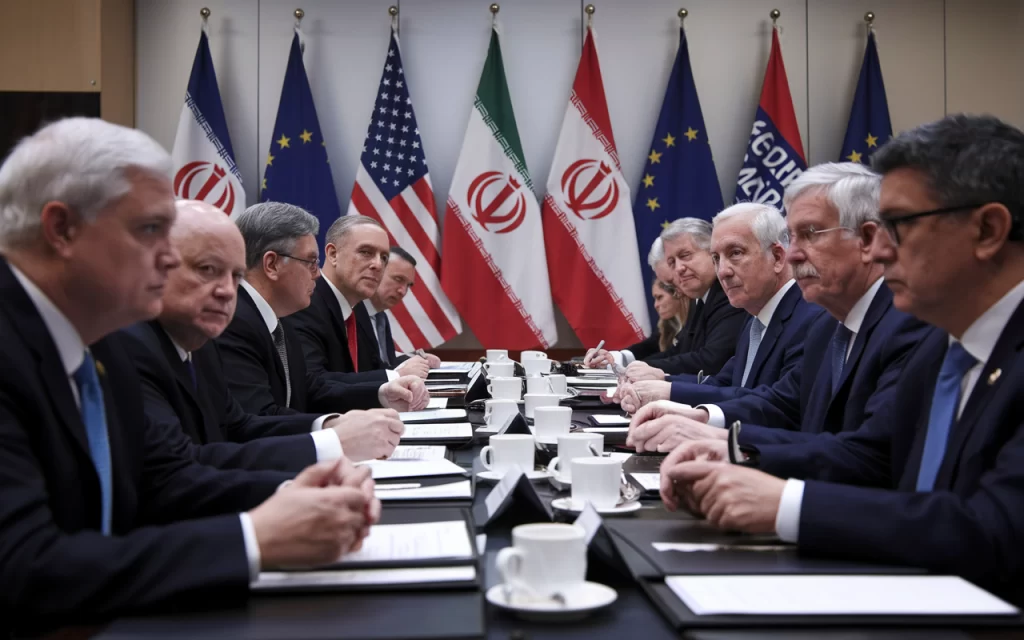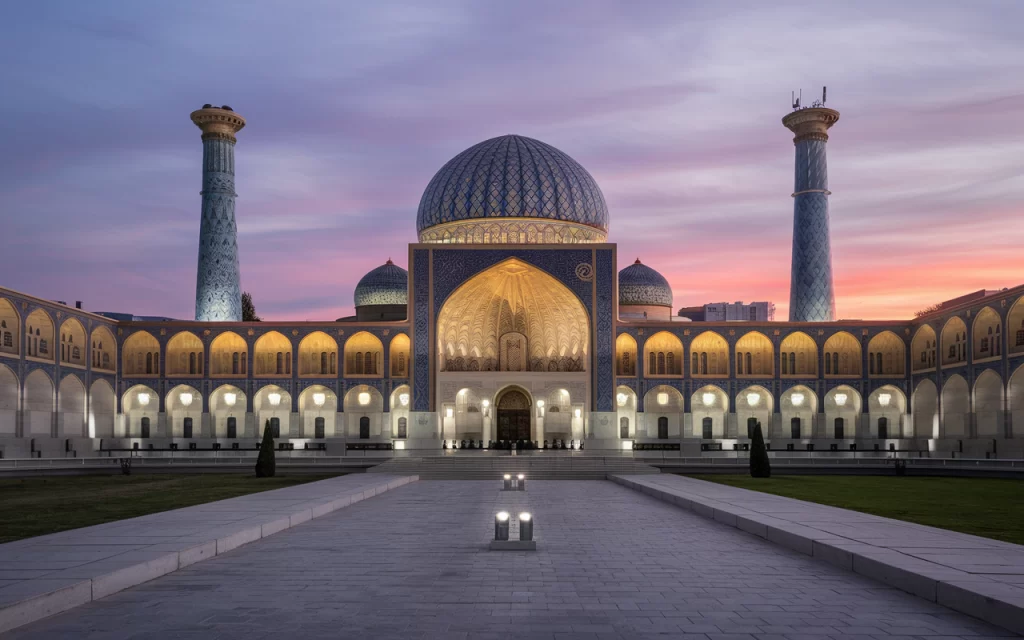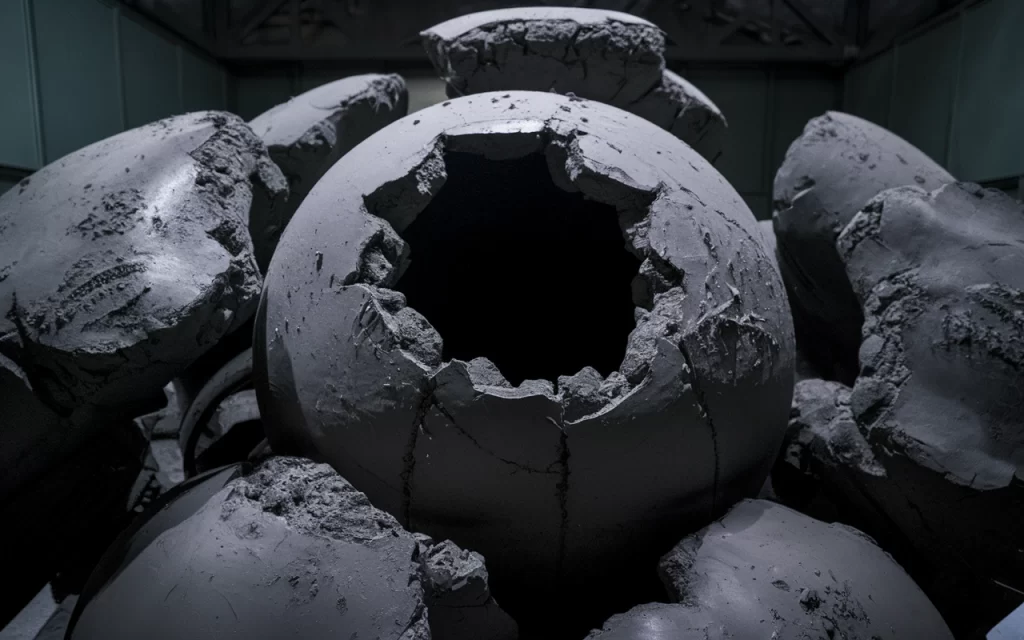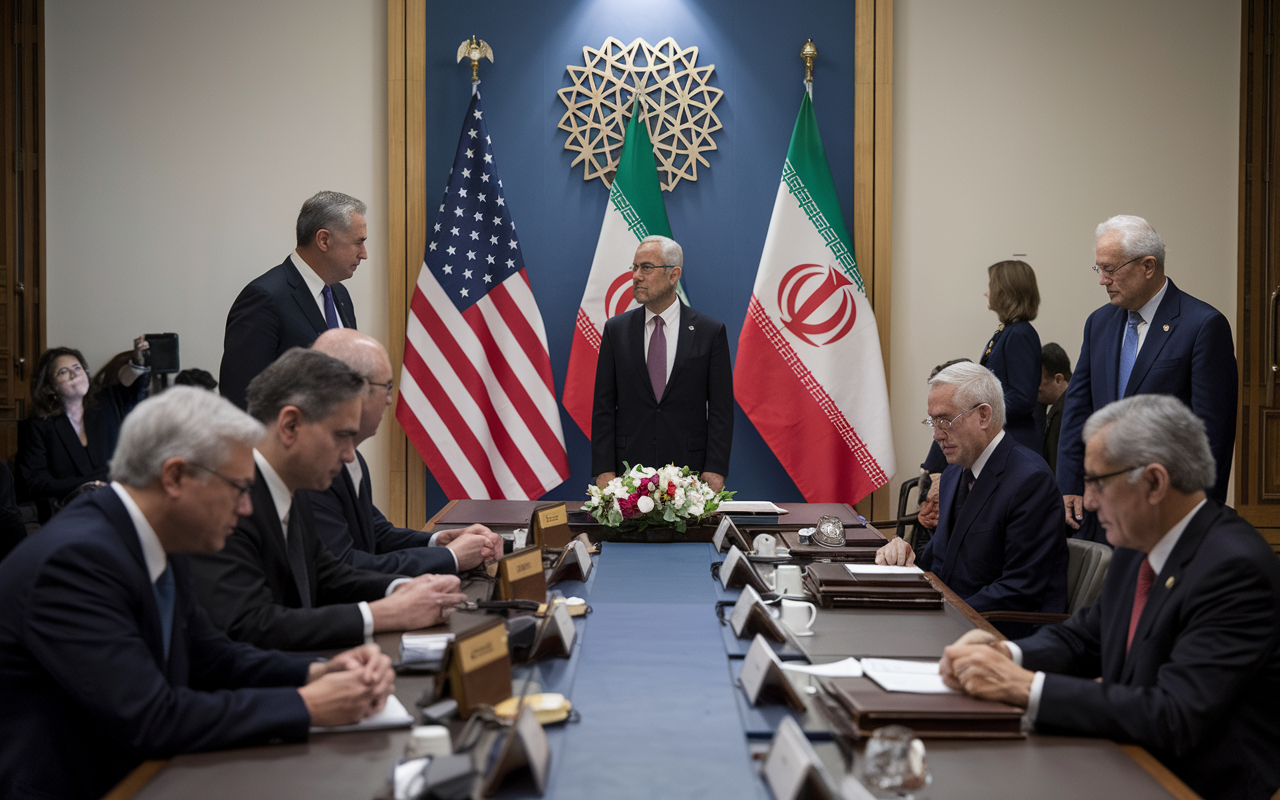Why the Iran Nuclear Deal Failed, The Joint Comprehensive Plan of Action (JCPOA), signed in July 2015, was a significant agreement addressing Iran’s nuclear program. This deal was an important diplomatic effort involving the United States, Iran, and other major countries. It included international inspections and promised sanctions relief in exchange for Iran curbing its nuclear activities. Initially, the deal seemed successful, with Iran agreeing to limit its enriched uranium and halt specific atomic projects.
However, the situation deteriorated after Donald Trump announced the U.S. withdrawal from the agreement in 2018. This decision led to escalating conflict and retaliation, including deadly attacks. By 2020, Iran had resumed its nuclear activities, with UN inspectors reporting that the country was enriching uranium to weapons-grade levels. International alarm grew, and despite President Joe Biden’s efforts to return to the agreement, stop-and-go talks and ongoing compromises failed to restore the deals fully. As of late 2023, the JCPOA remains in flux, with its expiration looming and the future of compliance uncertain.
Related Context and Analysis

The Why the Iran Nuclear Deal Failed was intended to prevent Iran from developing nuclear weapons by setting strict restrictions on its civilian nuclear enrichment program. Under the deal, Iran agreed to limit its use of centrifuges, reduce its stockpile of low-enriched uranium, and subject itself to rigorous monitoring by the International Atomic Energy Agency (IAEA). In return, the European Union and United Nations pledged to lift nuclear-related sanctions, which had severely impacted Iran’s economy and oil exports.
Goals of the Iran Nuclear Deal
The primary goal of the Joint Comprehensive Plan of Action (JCPOA) was to curb Iran’s nuclear ambitions and prevent it from becoming a nuclear weapons state. P5+1 nations, which include the United States, China, France, Russia, the United Kingdom, and Germany, sought to achieve this by negotiating strict nuclear restrictions with Tehran.
Objectives of the Iran Nuclear Deal
The Joint Comprehensive Plan of Action (JCPOA) aimed to address several critical issues surrounding Iran’s nuclear program. Key goals included:
- Preventing Nuclear Weapons Development: The agreement sought to ensure that Iran would not develop nuclear weapons. By imposing restrictions on uranium enrichment and requiring the dismantling of certain nuclear facilities, the JCPOA aimed to prevent Tehran from producing weapons-grade uranium.
- Promoting Transparency: The JCPOA established a framework for international inspections and monitoring. This was designed to assure that Iran was adhering to the agreed terms and that its nuclear activities were solely for civilian purposes.
- Reducing Regional Tensions: The deal minimises conflict and regional rivalries by limiting Iran’s nuclear capabilities. This included addressing concerns from Israel and Saudi Arabia about the potential for Iran to become a nuclear-armed state.
- Sanctions Relief: Iran was promised sanctions relief in return for compliance, which would unfreeze billions of dollars in assets and allow for increased trade and economic interaction. This was intended to support the economy and encourage a more cooperative stance in international relations.
Educator or Student?

The Joint Comprehensive Plan of Action (JCPOA) involves appreciating its historical and technical contexts:
- Educators: They often use the JCPOA to illustrate complex international relations, diplomacy, and nuclear non-proliferation concepts. Educators can provide insights into how diplomatic agreements are crafted and enforced by explaining how the P5+1 countries negotiated terms with Iran and the challenges involved in monitoring atomic enrichment. They might also explore the historical context of IIran’s nuclear ambitions and the role of U.S. intelligence analysts in shaping the agreement.
- Students: They benefit from learning about the JCPOA, which covers critical aspects of international negotiations and nuclear policy. The JCPOA serves as a case study of how global powers interact with nations seeking atomic technology and the implications of such deals on worldwide security and economies. By understanding the sanctions, economic impacts, and verification processes, students gain a comprehensive view of how international agreements aim to address complex issues.
Also Read: Somalia Flag: Discover The Powerful Story Behind Its Design
Does It Prevent Iran from Getting Nuclear Weapons?
The Joint Comprehensive Plan of Action (JCPOA) aimed to prevent Iran from developing nuclear weapons through a series of restrictions and monitoring measures:
- Restrictions: Under the JCPOA, Iran agreed to limit uranium enrichment and reduce its stockpile of low-enriched uranium. The deal restricted the number of centrifuges Iran could operate and set expiration dates for specific sunset provisions. These restrictions were designed to extend the timeline before Iran could potentially produce weapons-grade uranium.
- Monitoring: To ensure compliance, the JCPOA included provisions for international inspections by the International Atomic Energy Agency (IAEA). These inspections aimed to verify that Iran adhered to the agreed-upon limits and did not pursue a nuclear weapon. However, the deal’s unstable provisions and limited duration meant that some restrictions would eventually expire, which raised opponents’ concerns about the agreement’s long-term effectiveness.
What Did Iran Agree To?

Why the Iran Nuclear Deal Failed, Under the Joint Comprehensive Plan of Action (JCPOA), Iran made several vital commitments to curb its nuclear program:
- Nuclear Restrictions: Iran agreed to limit uranium enrichment at its facilities, such as Fordow and Natanz, and reduce its stockpile of highly enriched uranium. The agreement also included restrictions on plutonium production at the Arak reactor. These measures were aimed at preventing Iran from producing nuclear weapons material.
- Monitoring and Verification: Iran consented to rigorous international inspections by the International Atomic Energy Agency (IAEA) to ensure compliance with the agreement’s terms. This included granting inspectors access to nuclear facilities and any undeclared sites suspected of nuclear-related activities.
- Commitments on Centrifuges: The deal required Iran to limit the number of centrifuges used for uranium enrichment and modify its facilities to prevent the production of weapons-grade uranium. This was intended to extend the time required for Iran to develop a nuclear weapon.
- Implementation and Compliance: Iran agreed to follow a detailed implementation plan by a Joint Commission. This body was responsible for addressing disputes and ensuring Iran met its nuclear commitments outlined in the JCPOA.
What Did the Other Signatories Agree To?
The other signatories of the Joint Comprehensive Plan of Action (JCPOA), including the United States, the European Union (EU), and the P5+1 countries (China, France, Germany, Russia, and the United Kingdom), made several significant commitments in return for IIran’scompliance.
Closing Thoughts
The future of the Why the Iran Nuclear Deal Failed is marked by ongoing uncertainty and complex geopolitical factors. As diplomatic efforts continue, the ability of the involved parties to navigate these challenges will determine the agreement’s ultimate fate. The JJCPOA’srevival depends on reconciling nuclear activities, addressing regional tensions, and ensuring robust compliance mechanisms. The European Union (EU), alongside the original P5+1 countries, will plany a pivotal role in shaping the outcome of these negotiations. The international community’s engagement and the ability to balance diverse interests will be crucial in achieving a stable resolution.
FAQ:
What was the Iran nuclear deal?
The Iran nuclear deal, formally known as the Joint Comprehensive Plan of Action (JCPOA), was an agreement between Iran and world powers aimed at limiting Iran’s nuclear program in exchange for lifting economic sanctions.
Why did the Iran nuclear deal fail?
The deal failed due to various factors, including Iran’s non-compliance with certain terms, shifting political priorities in the U.S., and ongoing geopolitical tensions.
What role did the U.S. play in the deal’s failure?
The U.S. played a key role by withdrawing from the deal in 2018 under President Trump, citing Iran’s failure to meet its obligations and other geopolitical concerns.

